Standards for workwear
|
|
EN 342Protective clothing against cold. Requirements are set for insulation ability and air permeability. Cold environments are characterized by a combination of moisture and wind with a temperature below -5°C. |
|
|
EN 343:2019Garments certified according to EN 343 protect the wearer against rain and moisture. The standard was updated to a new version in 2019, with the addition of a new class: 4 (previously class 1-3) and an optional test of finished garments in a rain tower. The classes for protection against ingress of water (waterproofness) are the same as in the previous version, where the addition of class 4 requires higher results. The classes for breathability (resistance to water vapor) have been slightly adjusted with the addition of class 4. Requirements and tests for fabrics and seams for, among other things, water resistance, vapor permeability, and tear strength. X - Protection against ingress of water – waterproofness. Class 1-4 (where 4 indicates the best protection against rain/water) Y - Resistance to water vapor - breathability (Ret). Class 1-4 (where class 4 indicates the best breathability). R- Finished garment tested in a rain tower, optional. (X means the garment has not been tested) |
|
|
EN 471Protective clothing with enhanced visibility. The warning garments have fluorescent surfaces and reflectors that meet certification requirements for design according to three different classes. Class 1 Protective clothing equipped with fluorescent fabric, with a surface area of at least 0.14 m² and reflectors with a surface area of at least 0.10 m², for use where the requirement for visibility is at its lowest level. Class 2 Protective clothing equipped with fluorescent fabric, with a surface area of at least 0.50 m² and reflectors with a surface area of at least 0.13 m², for use where the requirement for visibility is not as high as in class 3. Class 3 Protective clothing equipped with fluorescent fabric, with a surface area of at least 0.80 m² and reflectors with a surface area of at least 0.20 m², where the highest level of visibility is required. |
|
|
EN ISO 20471:2012Hi-Vis certified garments are divided into three different classes based on how well the wearer is visible. The garments have fluorescent surfaces and reflectors that meet certification requirements for design, e.g. the minimum width of the reflector should be 50 mm. The materials are tested before and after washing, with a minimum of 5 washes, and if the garment has been tested and approved for a higher number of washes, this should be indicated on the washing label. The EN 471 standard was updated in 2013 to EN ISO 20471, and requirements for, among other things, the maximum number of washes were added. Class 1 Garments equipped with fluorescent material, with a surface area of at least 0.14 m² and reflectors with a surface area of at least 0.10 m², for use where the certified level of visibility is at its lowest. Class 2 Garments equipped with fluorescent material, with a surface area of at least 0.50 m² and reflectors with a surface area of at least 0.13 m², for use where the requirement for visibility is not as high as in class 3. Class 3 Garments equipped with fluorescent material, with a surface area of at least 0.80 m² and reflectors with a surface area of at least 0.20 m |
|
|
EN 1150High visibility protective clothing for non-professional use. The requirements are not as strict as those of EN 471, and there are no classes in this standard. EN 1150 will be replaced by EN 17353:2020 in August 2023. |
|
|
EN 17353Clothing with good visibility for medium-high risk. This attire is intended for situations with a medium-high level of risk. It is not intended for high-risk situations covered by EN ISO 20471. There are three different types available: A – or increased visibility during daylight using fluorescent materials. B – For enhanced visibility during dark conditions using reflectors:
AB – For increased visibility during both bright and dark conditions, using fluorescent materials and reflectors:
|
|
|
EN ISO 11611Protective clothing for use in welding and similar work (previously EN 470). Suitable for welders and industrial workers. |
|
|
EN ISO 11612Clothing for protection against heat and flame (previously EN 531). Certified and approved garments that protect the wearer from heat and flames. Suitable for industrial workers and electricians. |
|
|
EN 1149Protective clothing with electrostatic protection and reduced risk of spark formation. The garment should be used as part of a fully grounded system to prevent charges. Suitable in environments with explosion risks, such as refineries. |
|
|
EN ISO 14116Protective clothing with limited flame spread properties (previously EN 533). Certified and approved garments suitable for industrial workers. |
|
|
EN ISO 61482Clothing for protection against thermal hazards caused by electric arcs. Suitable in environments where there is a risk of electric arcs. |
|
|
EN 381Protective clothing for users of hand-held chainsaws. Classified based on the chainsaw chain speed it provides protection against. The garment is also classified into different designs. Design A and B are intended for use in normal forestry work by professional forestry workers who are well-trained and knowledgeable in the field. Design C covers the entire legs and is intended for use by individuals who do not normally work with chainsaws or in extraordinary situations, such as tree work. |
|
|
EN 14404Standard for knee protectors. The standard establishes minimum requirements for dimensions and mechanical requirements such as penetration resistance and force distribution. |
|
|
EN 1073-2Protective clothing against radioactive particulate contamination. |
|
|
EN 14126Protective clothing against infectious agents. |
|
|
DIN 32781Protective clothing against pesticides. |
|
|
EN 943Type 1Gas-tight protective suits. The highest level of protection where all parts of the suit must be completely gas-tight and provide the highest level of protection against penetration of chemical and biological substances, as well as against liquid and gaseous industrial chemicals, and be highly resistant to mechanical stress. The breathing air shall provide positive pressure throughout the entire protective suit. Subclass 1a: The air supply is located inside the protective suit. Subclass 1b: The air supply is located outside the protective suit. Subclass 1c: The air supply is provided externally, e.g. via an air hose. Type 2Non-gas-tight protective suits. A level of protection where the requirement for protection against penetration of chemicals and industrial chemicals refers to a lower concentration than for Type 1. The suit shall protect against penetration of liquids that spray heavily with low pressure from various angles. The suit shall be liquid-tight but does not need to be gas-tight. The breathing air shall provide positive pressure throughout the entire protective suit. |
|
|
EN 14605Type 3Liquid-tight protective suits - Suits that can protect against strong and directed streams of liquid chemicals, such as those that can spray out from a burst pipe under pressure. Such suits require a barrier material (chemical test according to permeation test EN 369) and sealed seams. Type 4Splash-proof protective suits - Protective suits that can protect against immersion of chemicals in liquid form, where the liquid volume builds up on the suit and forms puddles and streams. Such suits require a barrier material (chemical test according to permeation test EN 369) and sealed seams. |
|
|
EN 13982 - 1(2)Type 5Dry particle suits. Suits that protect against hazardous dust and dry particles. |
|
|
EN 13034Type 6Limited splash protective suits. Protective suits against limited splashes of liquid chemicals in liquid form, where there is no directed stream and no risk of liquid accumulating on the suit but where there may be a fine mist of droplets in the air. |



























